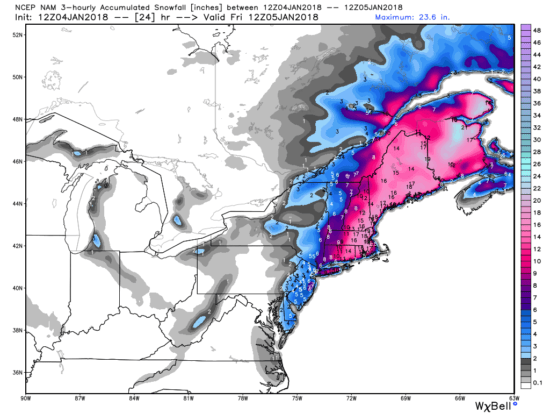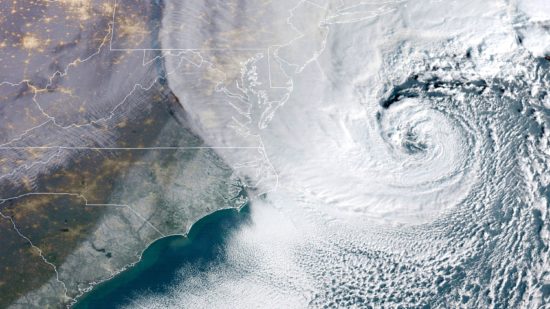The rapidly intensifying non-tropical cyclone producing heavy snow and blizzard conditions over the mid-Atlantic and New England is meeting expectations, with localized snowfalls of over 6 inches already this morning.
The latest NAM model forecast of additional snowfall after 7 a.m. this morning until tomorrow morning shows up to 12-18 inches of snow over portions of Massachusetts, Connecticut, Rhode Island, Vermont, and Maine (graphic courtesy of Weatherbell.com):

Maximum additional snow accumulations from 7 a.m. Thursday Jan. 4 to 7 a.m. Friday, from the NAM weather forecast model.
As of 9 a.m. EST, all 5 NWS reporting stations in Rhode Island have heavy snow falling.
The term “bomb” was coined by meteorologist Fred Sanders in 1980 to refer to a non-tropical low pressure area that intensifies at least 24 millibars in 24 hours. They happen every year, and are usually centered offshore in the winter where cold continental air masses meet warm oceanic air masses, providing maximum energy to the intensification process.

 Home/Blog
Home/Blog




